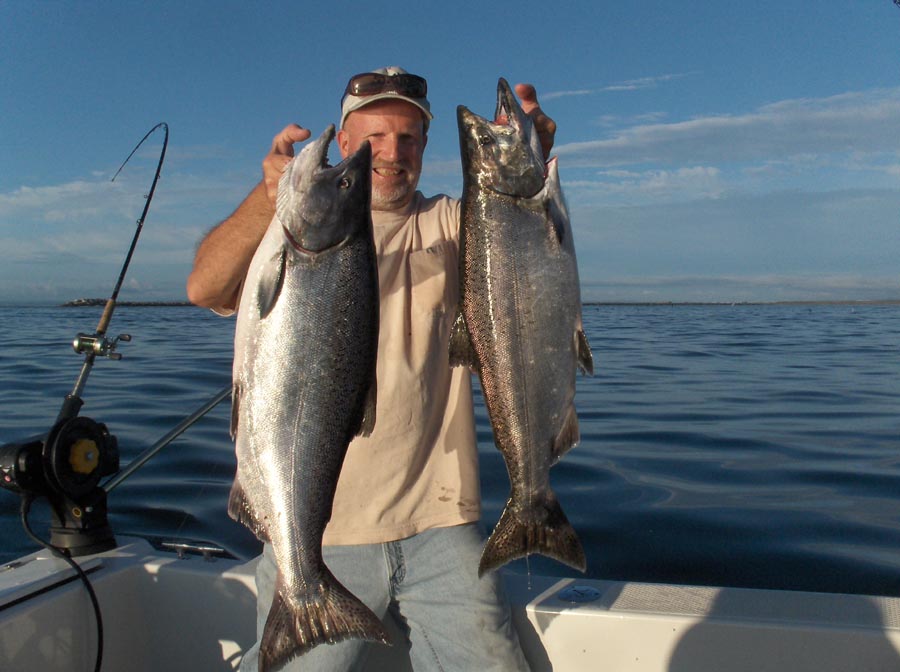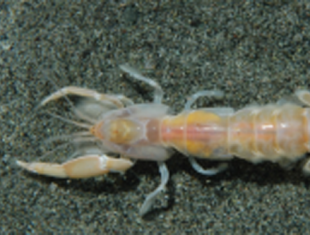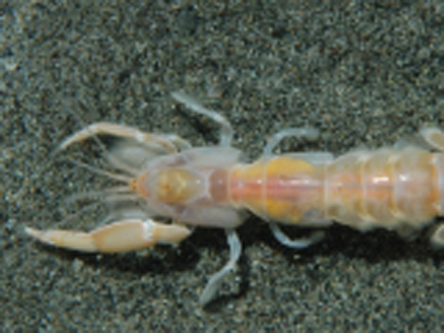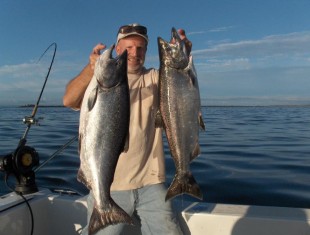
GHOST SHRIMP
Ghost and mud shrimp have been living and digging under the mud in Willapa Bay for millions of years. The oystermen have been at war with these native creatures since the early 1960s.
Commercial oyster harvesting began during the 1860s on the bay’s 47,000 acres of tidal flats. When settlers first arrived in the early 1850s the bay was nearly covered with the small native Olympia Oysters.
During the 1849 California gold rush, San Francisco seemed to explode into a city over night and Willapa Bay oysters were on the menu in most restaurants. Hundreds of millions of oysters were loaded onto sailing ships for the journey south and by the late 1880s the over-harvest of oysters was starting to be a problem.
Every spring the Columbia River would flood from the massive mountain snow melt as far away as Alberta, Canada. The dams pretty much control that nowadays, but back then the river would occasionally go over its bank and leak north into Willapa Bay, smoothing some oyster beds with silt and killing off some of the ghost shrimp because of their low tolerance to fresh water.
But one spring in the late 1880s the Columbia River experienced one of those one-thousand year floods. The fresh water roared into the bay and covered the remaining native oysters in the Willapa (it was called Shoalwater Bay back then) with silt and that was the end of that oyster business.
One of the early experiments by the oystermen was the introduction of the eastern oyster from Chesapeake Bay. This turned out to be a huge mistake! Not only did the oysters have a reproductive problem in its new environment, the shipments by train also unknowingly contained the seeds of the salt water loving grass “Spartina”.
This invading grass now covers about 15,000 acres of mud flats in the bay wiping out oyster beds and important places for migrating birds to feed on the critters that live in the mud. The grass looks pretty but the birds won’t go near it probably because they can’t see if predators are in there.
So now we spend millions of dollars every year trying to control it by spraying lots of nasty herbicides to the possible detriment of everything else living in the bay.
By 1900 we finally started trading with Japan. Japan wanted nothing to do with the rest of the world for hundreds of years before that. The Japanese had been farming the large and tasty Pacific Oyster for much of their history, so we bought and barged millions of them across the Pacific to Willapa Bay and Hood Canal-Puget Sound.
This was an instant success and still is.
The down side of all this trade is the oyster drill and a few other undesirables that came with them. Now because of world trade ocean-going ships have left us with at least 40 new species living in Willapa Bay, some of them bad and some not so bad.
The ghost and mud shrimp weren’t much of a problem for the oystermen until the 1950s when their population started increasing dramatically. Some of the possible reasons for the increase are ‑ Spartina grass taking over some of the shrimp’s prime habitat, and since the late 1930s no floods of fresh water have entered the bay from the Columbia River because of the dams.
Also, back in the day when there were lots of green sturgeon, they would come in the shallow parts of the bay and sift through the mud, eating shrimp by the zillions, keeping the population down somewhat.
The shrimp cost the oystermen lots of money because they are always burrowing tunnels in the mud under the oysters, making clouds of muddy water, and making softer mud so the oysters sink into the mud and eventual killing them.
Since the early 1960s, the oyster beds have been sprayed with the pesticide carbaryl to kill the shrimp, but the pesticide is also pretty darn good a killing all kinds of creatures.
Of course, most of the animals that die in the mud could be food for some other animals like small Dungeness crab, small salmon, birds, and the list goes on and on.
In the early 2000s the oystermen got sued by some concerned citizens, so they had to stop spraying that chemical by the year 2012. So, they came up with a new plan to spray the pesticide imidacloprid on the oyster beds. This stuff is also good at killing things, but the chemical company said it should be a little bit safer then the stuff they were using.
The Washington Department of Ecology signed off on it, saying it was worth the risk to save the oystermen. But the EPA, NOAA and U.S. Fish and Wildlife didn’t like the idea. After the story came out in the Seattle Times in early May 2015, the oystermen decided they should come up with a different plan. They got so much negative feedback from their customers they were probably a little surprised.
All these years, people thought they were buying oysters from some of the most pristine waters in the world. Then they find out they were eating food with dangerous chemicals in them just like nearly everything they buy at the store. It’s probably not as bad as it sounds, but some people actually think the chemical companies will eventually kill all of us. It’s just a matter of time.
There must be a way to grow oysters above the mud that won’t break the bank. Maybe through a government grant some students at the University of Washington and Washington State could come up with a system that would accomplish this in a fiscal way, thinking, of course, out of the box.
The oyster industry is worth about 40 million dollars a year to the area and losing that would be a very bad thing.



